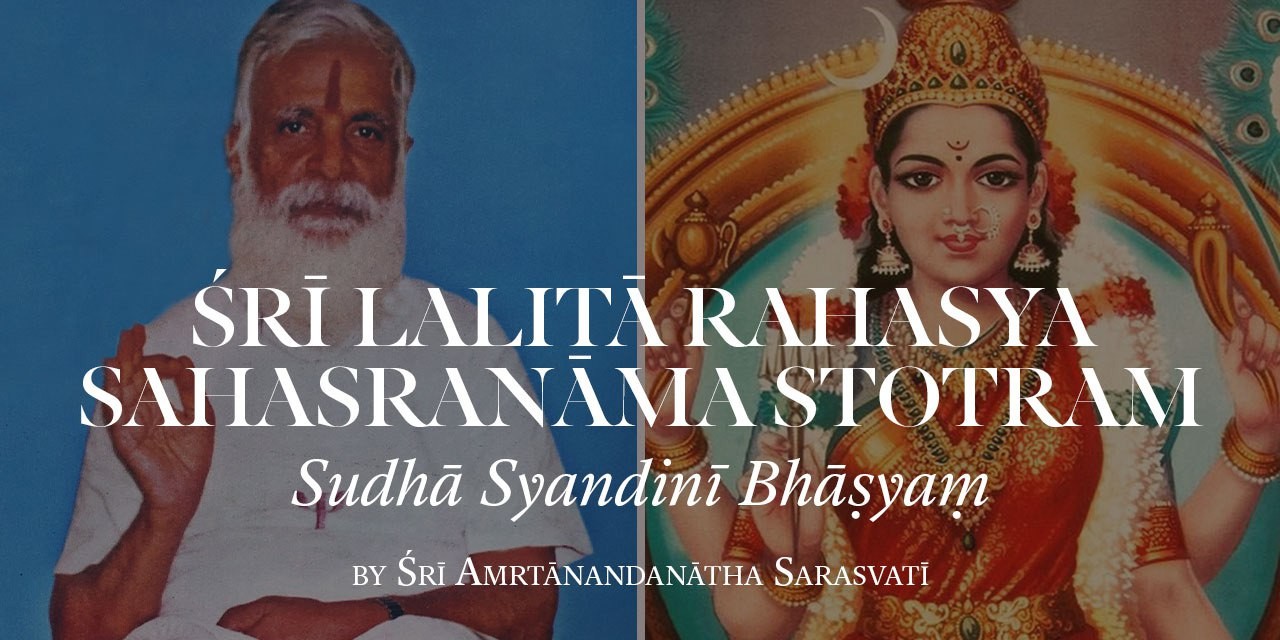
36) Stanabhāra-dalanmadhya-paṭṭabandha-valitrayā
Śrī Devi's waist is so narrow and Her breasts are so heavy that the waist may not be able to support Her heavy breasts and may give way. To prevent such an accident, Her tummy carries three horizontal lines which appear as if a golden waist band was wound thrice around to support the weights above.
The hour glass figure of the waist suggests a dipole field emanating from a centre resembling the “figure 8”. The one centre becomes two, creating the separation between them, which is the third element; thus the triad or the triputi is born on the cosmic scale. The three lines of the waist indicate this triputi. The best description of this triputi is that it consists of:
the observer,
the observed, and
the symmetric relation of observation between the two.
The relation is symmetric because while the first observes the second, the second, which is the same stuff as the first, observes the first one. Thus, it is that the individual observes the cosmos while the cosmos observes the individual. Thus there are three choices before every individual.
The first is to retain an individuality and observe the cosmos.
The second is to observe oneself, being the cosmos.
The third eschews the observation process by merging all three into either of the three.
–––––––––
If all three are merged into the observer, the I alone is; this is jñāna mārga, the path of knowledge.
If all three are merged into the observed, you alone is, this is the path of devotion, bhakti mārga.
If all three are merged into the symmetric observation process, then neither I nor you remains, everything merges into action, interactions. Such an interaction representation is the path of action, karma mārga.
The paths appear to be different initially, but the final result is the same no matter which path is chosen.
How does one become two? It is not usual to find an inanimate thing duplicating itself. There is no restriction preventing one from becoming many. It is the common observation which needs no proof that out of pure awareness which has no thoughts in it, thoughts do arise, thoughts being the same stuff as awareness. Out of like comes like. Where there is a second, there is always a third. Out of one awareness comes three, never two. The centre is navel, one. The three lines below support the weight of creation, sustenance and absorption. As we have analysed earlier, the apparent solidity of material particles is a figment of imagination. The reality is the unmanifest one, pure unconditioned awareness, out of which the triputi arises spontaneously without a prior cause. The cosmos is aware just as I am aware. Out of me has come this cosmos, and into me it will merge. Aham brahmasmi.
This cluster of ideas is symbolically represented in the Śrī Cakra as the central point surrounded by three lines of a triangle at a lower level. The triputi is at a lower level than the one. It supports the one and is in turn supported by it, both being equally valid descriptions of reality differing in levels of description.
The gods creating, sustaining, destroying these worlds, Brahmā, Viṣṇu and Īśvara, and their powers of creativity, sustenance, and absorption called Sarasvatī, Lakṣmī and Kālī are thus emanations from the Supreme One, Lalitā who is identical with the unmanifest Brahman of the Upaniṣads. Lalitā Herself takes all these forms, from the most exalted gods to the vilest of demons; from the highest to the lowest; She is the one and only playmate to all forms of witness, whatever name they go by. All the gods of intelligence, ego, senses, space, time, matter, laws of nature, pay homage to Her, your own inner self. Everything or thought that was, is and will be is Lalitā only. She is the mother of all, She is the daughter of all, She is the wife of all, She is the friend and enemy of all, She loves all, and She is indifferent to all, because She is all.
It is important to understand once and for all, that relations which appear in conditioned existence at a relative level of reality, all such relations merge into the one relationship of identity. Identity is one relationship which subsumes all relationships into it, which admits all relationships in it including the no-relationship. This last-mentioned ‘no’ relationship to itself is the witness relationship called Sākṣībhāva.
Source: Śrī Amṛtānandanātha Saraswatī "Sudhā Syandinī Bhāṣyaṃ" Typed Manuscript
(an incomplete commentary on Lalitā Sahasranāma)
